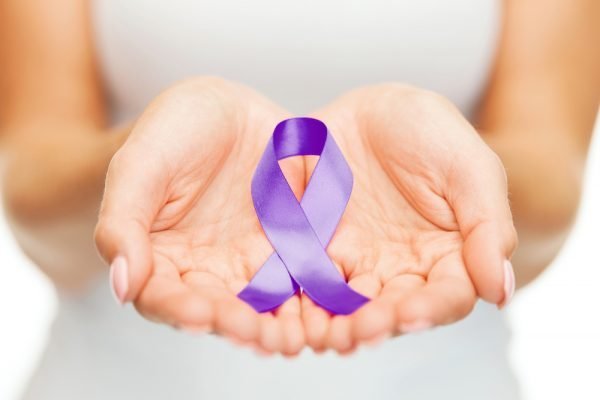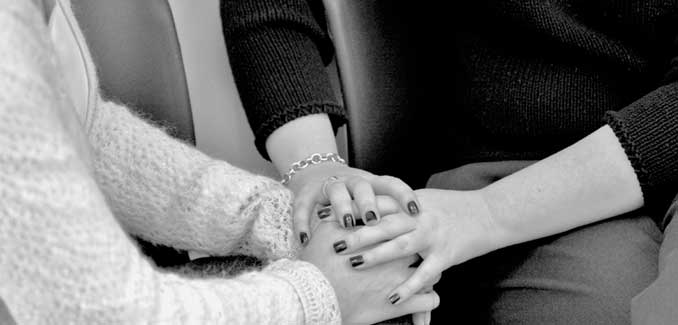Domestic violence can be explained as a model of abusive behavior in any association that is used by one partner to exert or gain control and power over an intimate partner.
The National Center for Injury Prevention and Control states that a large portion of the female populace experience about more than 4 million instances of rapes and physical assault by an intimate partner every year; and that only less than twenty percent of battered women sought medical treatment following an injury.
Domestic Violence Law
Domestic violence law focuses on the details of abuse with family, or partner. It supplies the criminal rules for punishing those who inflict emotional or physical harm to others with whom they share familial or other immediate relationships.
The Domestic Violence Law also assents with the civil protections accessible to sufferers of DV of this type of maltreatment. Federal legislation has been legislated making domestic violence a crime, most significantly the Violence Against Women Act (VAWA).
The great majority of domestic violence offenses, however, are processed in legal proceedings under state law.
Domestic Violence U.S. Hotlines
There are millions of domestic violence and abused recipients around the world, although not all situations come to the attention of law enforcement officials. People who are at the mercy of domestic violence rely on the police to protect them, but many of these individuals are reluctant to report such crimes because of their fear of reprisals.
The police believe that fear of reprisal was one of the reasons the battered person recants, although it didn’t protect them from the next attack.
Police report alcohol or drug abuse being a factor in the majority of domestic violence situations. However, not all batterers are under the influence of anything other than their own craving to control others.
The abused often stay with their abusers because they feel that suffering in silence is safer than trying to escape. It can also be difficult to get away from an abuser and start a new life when there are children, jobs, houses and other factors involved. Leaving the abuser should be of paramount importance, not only for the abused person’s safety, but for that of the children as well.
Anyone who could not seem to escape the clutches of domestic violence may need to await the opportune time to leave an abuser. Here are a few suggestions for those awaiting a chance to flee:
- Ask the neighbors to call the police anytime they hear the sounds of violence at the abused person’s house.
- If the abuser is about to become violent, the abused should attempt to find a safe way to leave the house, or go to a secluded area inside the house to call the police.
- Teach children how to call 911 and ask for help.
- Be willing to testify in court and tell the judge why they will be in danger if the abuser is released.
- Get a restraining order against the abuser.
- Flee to a domestic violence shelter if possible.
- Call the National Domestic Violence Hotline for assistance at 1-800-799-7233, or 1-800-787-3224
- Contact the National Domestic Violence Hotline online at http://www.ndvh.org

Domestic Violence Shelters
People who have experienced domestic violence go through a very difficult time even in their own homes. Unfortunately, the emotional, mental, and physical trauma from the ordeal has affected them greatly and are unable to function like they used to.
Such experience elicits strong emotions: feelings of unworthiness, deep sadness, and most commonly, anger. The anger is directed towards the culprit who is wholly responsible for inflicting hurt — but mostly to the person who went through the harrowing experience.
Because of the unwanted life transition brought by domestic violence, some have felt the urge to leave their homes (which is mostly listed as the number one place where domestic abuse occurs) and simply get away from everything that makes them feel, or reminds them of the incident.
Those who have amassed courage and are determined to move forward and take charge of their lives, many of these people seek the help of domestic violence shelters in their area or at another place to heal through counseling, learn new skills, and start all over.
Next, listed are the top 5 DV shelter homes in the U.S. with their respective contact details:
Springfield, OH
- Hotline – 800-634-9893 (24⁄7)
- Toll-Free – 800-634-9893
- Business – 937-328-5308
- TTY/TTD – 937-328-0474
- Fax – 937-328-5324
- Email: projectwoman@projectwomanohio.org
Lewes, DE
- Hotline – 443-653-2067 (24⁄7)
- Business – 443-653-206
- Email: whatisyourvoicemedia@gmail.com
3. Rise-NY
Endicott, NY
- Hotline – 607-754-4340 (24⁄7)
- Toll-Free – 877-754-4340
- Business – 607-748-7453
- *Collect calls accepted
- Fax – 607-748-5166
- Email: info@Rise-ny.org
Colorado Springs, CO
- Hotline – 719-600-3939
- Toll-Free – 833-719-9463
- Business – 833-719-9463
- Email: haseya.advocate@red-wind.net
5. Aid to Victims of Domestic Abuse, Inc. (AVDA)
Delray Beach, FL
- Hotline – 800-355-8547 (24⁄7)
- Toll-Free – 800-355-8547
- Business – 561-265-3797
- TTY/TTD – 800-355-8547
- Fax – 561-265-2102● Email – avda@avda-fl.com

What Are The Domestic Violence Laws in the U.S?
Domestic violence law is an area of practice that many attorneys are taking very seriously. Instances of this type of abuse are growing in popularity. Fortunately, it is becoming less of a stigma, and people are more willing to report it to the authorities when it does occur. If you feel like a victim in your own home, it is time for you to do something about it. Help is available for most people out there and, when that help is obtained, there is the ability to finally walk away from the risks and into a new opportunity at a safer lifestyle.
The fact is, domestic violence law is thorough. It does not matter if you are male or female, young, old or of any religion, sex association or marital status. If you are being physically or verbally abused, you have the right to take action. However, you should not do so on your own. Rather, it is often better for individuals to seek out a professional who can help them to learn what their options are and how to overcome their limitations.
What can you do? How can you finally get away? Talk to an attorney about what your options may be, and what you should do right now to improve your life. Some things to consider include the following:
- Approach the police to document any type of abusive language or actions against you. It is a good idea to request help through a restraining order if you feel threatened for any reason.
- Talk to an attorney about your rights to leave a situation, including a marriage, if there is abusive behavior taking place there. Find out what your lawyer believes is the best step for you to take.
- If you are not the one facing the abuse but know of someone that is, take action, but do so in the right manner. You will want to make sure that you have proof of what is occurring. You will also want to ensure your loved one remains protected in situations like this.
It is up to you to take action. Domestic violence law differs from one state to the next, but every state in the country recognizes this type of abuse. For those who are dealing with this type of situation, the problem will not stop on its own. There is help in every situation if you reach out for it. Doing so could mean improving your quality of life for years to come. Talk to an expert about your rights and the steps to take to move in the right direction.
What Are Domestic Violence (DV) Classes?
Domestic violence is one of the silent and hidden epidemics affecting millions of families in this country. Generally regarded as the physical, emotional or verbal abuse of a spouse or partner, domestic violence usually occurs through manipulation, intimidation and coercion.
The purpose of DV classes is to educate the perpetrator, either male or female, of the effects and consequences of domestic violence on his or her family. Not only is the abusers spouse or partner harmed by domestic violence, but the children living in the home may be extremely negatively impacted by the violence they witness or experience.
These classes attempt to teach the batterer the importance of taking responsibility for their actions. Another objective is to help the abuser differentiate between anger that is appropriate and those behaviors that are considered violent and inappropriate.
The classes also attempt to confront the abusers beliefs and attitudes that may be some of the underlying, contributing factors of the violence.
Court-ordered domestic violence classes must meet both state and county standards and are approved by the court. In general, if classes are court-ordered classes cannot be taken online. However, in some cases this may be allowed, but the decision is up to the jurisdiction in which the offender resides.
For classes held in a classroom setting, men and women are separated and do not attend classes together. The issues of power, control, manipulation, coercion and oppression are explored. In most cases, those attending the classes are required to pay a fee, which is usually based on a sliding scale.

DV Charges
Domestic violence cases are some of the most common types of cases taken on by criminal defense attorneys. So lawyers must have vast knowledge of domestic violence law in order to have a successful practice, but it’s important for lay citizens to have a good understanding of this type of law as well.
The definition of domestic violence is an act or threat of violence between people in an intimate relationship. The violence could be intimidation, control, coercion, or punishment as well.
The people in question do not have to be married in order to fall under the domestic violence umbrella, but they do have to be proven to be in an intimate relationship by the District Attorney.
There are all shapes and sizes for these types of cases that come through the office of an experienced criminal law attorney, but some of the cases show up more often than others.
There is a top 5 list of allegations that most attorneys would agree are the most common cases that they receive calls about. That list is outlined below:
1. Child Abuse or Child Endangerment – Involving a child in any of the types of violence explained in the second paragraph or having a child in the same area as violence against another could result in a domestic violence charge concerning a minor.
2. Battery – This is when an injury incurred due to violence is not severe enough to warrant a felony, but instead just a misdemeanor.
3. Criminal Threats – Even though no physical harm is imposed through a threat, it is still illegal to threaten someone with serious harm or injury to cause fear within them.
4. Corporal Injury to a Spouse or Cohabitant – This means physical violence has actually occurred and there is physical evidence to show for it (ie a bruise, or swelling). Depending on the severity, the act of violence could be charged as a felony or misdemeanor.
5. Elderly Abuse – Neglecting, causing physical or emotional abuse, or financial fraud to a person over 65 years old is also considered domestic violence.
Police can make arrests for domestic violence allegations fairly liberally, so just because someone has been arrested, doesn’t mean they’re going to be charged with a crime. People who are worried about being charged, though, need to get a hold of a criminal defense attorney to ensure that they are properly protected.

Is DV A Felony?
DV can be categorized as either a felony or misdemeanor based on the severity of the incident. That said, felony domestic violence is considered a grave offense which leads to serious legal outcomes. Felony in DV entirely depends on every state’s jurisdiction and has one or more of these factors:
ing in serious bodily harm or death;
- Abuse or violence or abuse meted out on a minor,
- Threats and/or acts that cause injuries using a deadly weapon, and● Inappropriate sexual conduct
Hiring A DV Lawyer: What To Expect
By seeking legal help on account of domestic violence (or DV), many people have successfully had restraining orders issued to protect them from an abusive spouse, family member or other domestic partner. Speaking with an experienced and knowledgeable attorney has allowed many people to have their questions answered.
There may be different laws regarding these crimes and their penalties in each state, so speaking with an attorney is often the best way to determine which steps one must take to obtain a restraining order or to pursue other legal measures.
Alternatively, if you have been wrongly accused of domestic violence, the cost of not hiring legal help could end up costing far more in the form of fines, jail time, rehab, mandated weekly classes, probation, loss of child custody or visitation, loss of gun ownership, and the inability to get a job or housing, if convicted.
DV cases may be considered both criminal and civil crimes and have different punishments depending on the particular circumstances of the incident and the state in which the parties reside.
Some people are provided a lawyer by the state if they are not financially prepared to shoulder much of its expenses.
Domestic Violence Statistics
In the United States,on average, an average of 20 individuals per minute are victims of stalking, physical assault, and rape by an intimate partner. That is more than 8 million men and women All throughout the year.
Almost half of all men and in the US have suffered psychological aggression by an intimate partner in their lifetime.
More than 30 percent in women, and more than 25 percent in men have suffered rape, physical violence and/or stalking by an intimate partner in their lifetime.
Intimate partner violence (IPV) alone affects more than 8 million individuals annually.
More than 20 percent in women, and more than 10 percent in men aged 18 and up have been the victim of severe physical violence by a significant other in their lifetime.
More than 10 percent in women and 2 percent in men have been injured as a result of IPV that included stalking, physical violence, and rape by an intimate partner in their lifetime.
More than 20 percent in women (29%) and more than 10 percent in men have experienced rape, physical violence and/or stalking by a partner and report a related impact on their functioning.
DV in Women
- In intimate partner violence, a great portion of abused females were previously victimized by the same perpetrator which includes more than 50 percent of them aged between 18 to 24; about 60% of females aged between 25 to 34, and 81percent between the ages of 35 to 49.
- About 4 in 5 abused females of intimate partner violence were women.
- Generally, females ages between 18 to 34 experienced the highest statistics of intimate partner violence.

DV in Children
- The US Advisory Board on Child Abuse and Neglect proposes that domestic violence in children may be the topmost major forerunner to child abuse and its failure to look after fatalities.
- Children who were grew up witnessing domestic violence in the home were 10 times more likely to be sexually and/or physically assaulted than the overall average.
- There is a correlation between family conflicts/domestic violence and child abuse. Among victims of abuse in minors, than 30% report domestic violence in the household.
- 30 to 60% of offenders of IPV also abuse children in the home.
- Nearly 1 in 3 children who were exposed to domestic/intimate partner violence charges filed in state courts.
DV in Men
- More than 15 percent of domestic violence in males reported being raped by a stranger, and 50 percent by an acquaintance.
- Almost 2 percent of men have been assaulted, raped, and beaten in their lifetime by their intimate partner or any offender.
- More than 30 percent of men report such impacts of their ordeal.
- More than 40 percent of the LGBT community is sexually assaulted at some point in their lifetime.
Understanding Domestic Violence And Its Ramifications
Looking at domestic violence statistics can be quite disturbing. However, by doing so, it helps all of us understand the issue better and allows us to come up with solutions to abuse.
Any kind of violence between family members, spouses and partners is domestic abuse. Domestic abuse is usually brought on by high stress and behaviors, as many as one in every four women have been a victim.
Each year, 85% of victims are women abused by their partners. Men make up 15% of DV victims as well.
This type of abuse is all around, but it is not talked about. As many as 74% of people know someone who has or is going through one form of domestic violence, and 30% of people know of someone who has been abused physically by their partner within the last year.
Unfortunately, domestic violence can lead to death. In domestic homicides, one in every four is a man, meaning that three out of four homicides are women; and these men and women were killed by their intimate partners.
Looking at domestic violence statistics reveals that children are often victims of domestic abuse. Men who assault their wives are 50% more likely to assault their children.
Every year as many as 3.3 to 10 million children witness domestic violence.
Often, when men are victims of domestic violence, the issue is often downplayed. If a man is subject to abuse he is more likely to not report it, making it harder to get accurate domestic violence statistics.
The act of domestic violence is comparable between men and women. But the abuse that men receive from partners varies and women are likely to take abusive control by making the husband feel bad about himself, thus deflating his self-esteem.
Women are more likely to use jealousy, isolation, children and financial abuse whereas men are more likely to use their physical prowess to intimidate a woman.




Pingback: Barbara
Pingback: Stacy